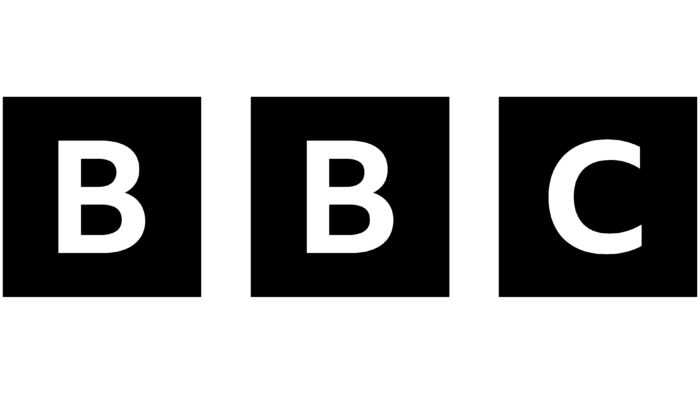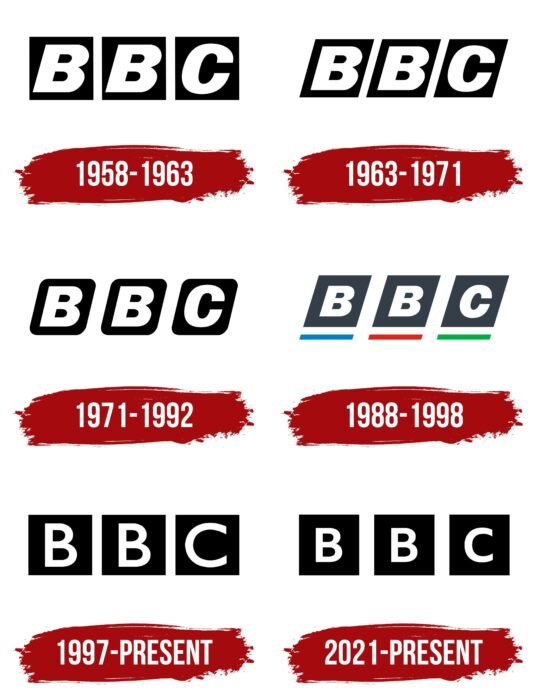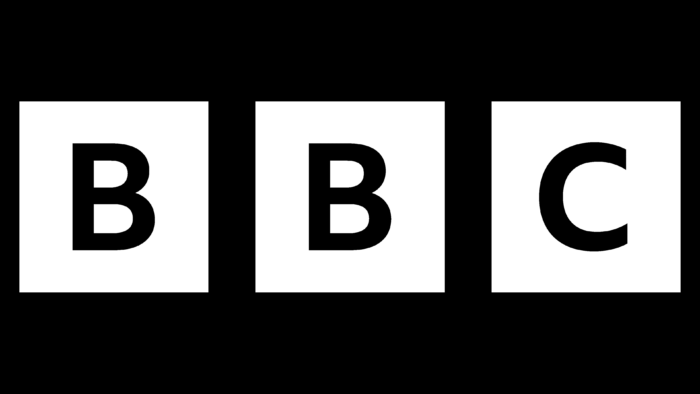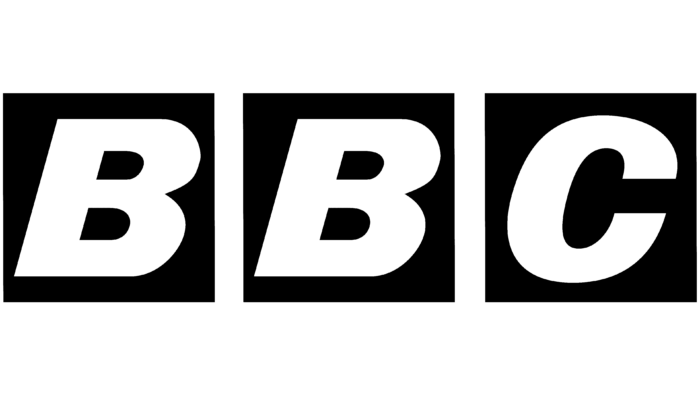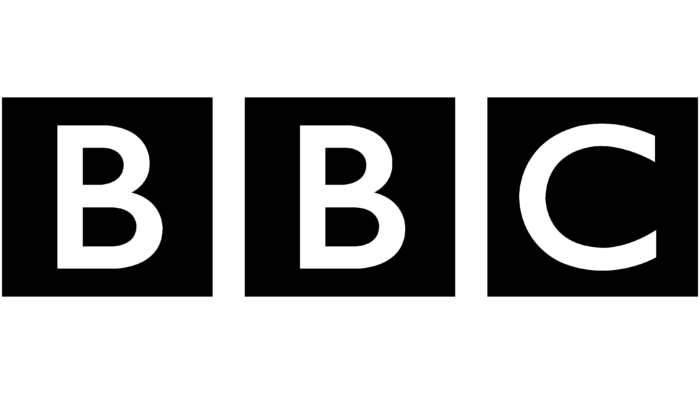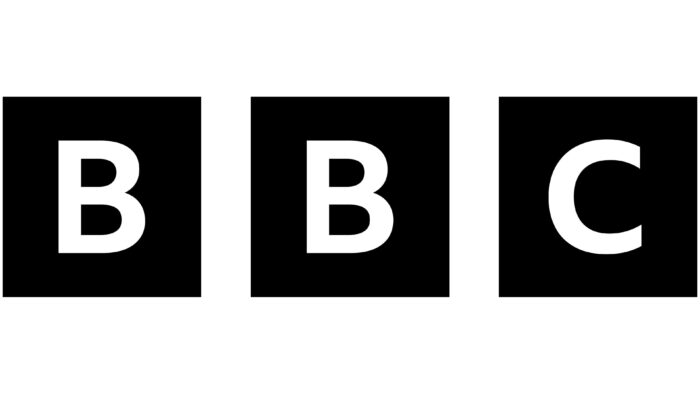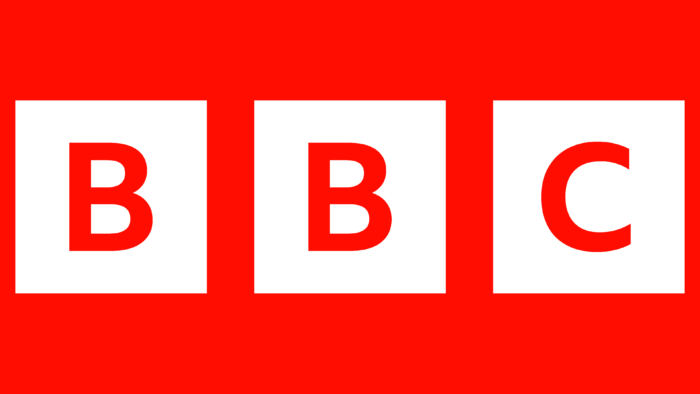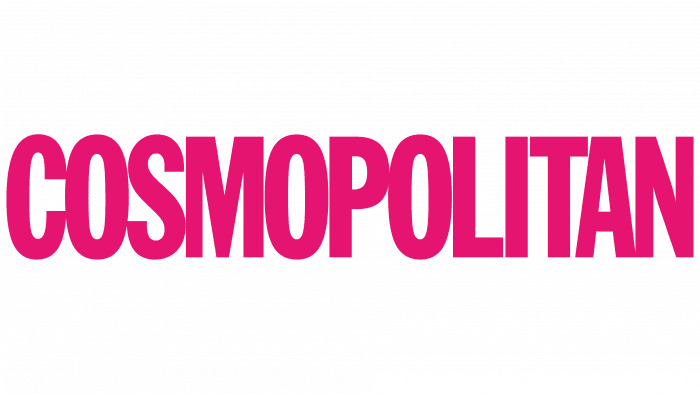The BBC logo can be called a classic of minimalism. The emblem shows commitment to tradition, as the British Broadcasting Corporation adheres to strict branding standards. Shapes and colors are chosen so that there is a balance, even in small things.
BBC: Brand overview
| Founded: | 18 October 1922 |
| Founder: | HM Government |
| Headquarters: | London, United Kingdom |
| Website: | bbc.com |
The development of world radio and television broadcasting is closely linked to the creation and development of the world-famous British Broadcasting Corporation, the BBC. It was the product of the joint decision of October 18, 1922, to create the British Broadcasting Company of several leading private British corporations in broadcasting and electricity. It was nationalized in 1927. Today the corporation broadcasts domestically and around the world, conducted by a special division, the company’s World Service. Being not a state but public, the corporation is administered by the Board of Control and the 12 Royal Trustees.
Over such a long period, the BBC has undergone many changes. It began as a broadcaster and, through its constant development, has quickly reacted to the emergence of a new form of information presentation – television, immediately making it one of the main areas of its activities, launching an experimental television broadcast in 1932. Each stage of its development was reflected in informing the company’s image, style, logo, and brand mark. However, created back in 1958, the first logo in the future has undergone only minor changes, demonstrating a classic British commitment to tradition.
Meaning and History
During its first two years, the BBC covered London, the West Midlands, North-West, South-West and East, North-East England, Wales, Scotland, Yorkshire and the Humber, and Northern Ireland.
In January 1927, due to the national importance of this way of informing the public and controlling the information being filed, it was decided to nationalize the company and rename it. Retaining its acronym, the company was named the British Broadcasting Corporation.
The year 1932 was the year of radical changes. In that year, the BBC Empire Service, an international news broadcasting channel, began operating. In the summer of the same year, Baird’s company began to produce televisions, which was the occasion for realizing the idea of mass broadcasting. In that year, the company broadcast television in experimental mode. And in two years, it became permanent, but with a restriction on the time of broadcasting.
In 1936 the BBC Television Service began its work, which before the start of World War II had already covered up to 40,000 homes.
One year after the war, on March 26, 1946, the Russian Service was broadcast to the USSR. And the first Russian-language broadcast was Stalin’s conversation with correspondents from the United States. At the same time, TV broadcasting was resumed.
Until 1955, the BBC was the only television network in Britain. As a broadcasting company, it had a monopoly until the seventies.
In ’58, the company’s first logo was created, which became its face on all television channels. Since then, the corporation began to pay attention to studying the demand in the market of television services, its image, and design.
From 1965 to 1991, the company was increasing its capacity, increasing opportunities, launching new radio channels, closing obsolete, constantly expanding its coverage. The development of science allowed the BBC, which immediately introduced all the novelties and achievements of modern technology, to successfully compete for leadership in the global information market, where competition in its field has increased and strengthened over the years. So on March 11, 1991, the first satellite channel BBC World Service Television, went on air.
The end of the last century was marked by the corporation’s transition to digital broadcasting in all directions.
The new 21 century, with all its features, has led to dramatic changes in the structure of the corporation. Some international radio and television broadcasting channels were shut down. The corporation started to redirect its efforts to the Internet.
All these events influenced the formation of the company’s image. However, its logo underwent only minor changes, demonstrating conservatism but confirming the recognizability of the company even just by ear. Today it is known all over the world.
1958 – 1963
The creation of the first logo took place against the background of the expansion of the company’s influence in the international broadcasting market. The brand sign was designed by Abram Games studio. The sign consisted of 3 black squares, in each of which one letter of the abbreviation of the name was typed in white slanting font Univers. The logo was intended as an on-air image.
1963 – 1971
The changes to the 1963 logo mainly affected only the black squares. They were given a slant symmetrical to the slant of the letters. This brand mark would already be applied to the cameras, the company’s television equipment, as an emblem at the end of broadcasts.
1971 – 1992
For more than 20 years, the company would not pay much attention to rebranding. It wasn’t until 1971 that the logo would be slightly modified. The black blocks where the acronym is placed would acquire rounded edges. The distance between them is somewhat increased. The late eighties – early nineties – a time when every company’s image began to have a huge impact on its popularity and, therefore, on consumer interest growth. This required the creation of programs under its brand, which allowed viewers to be sure that they were watching a program produced by the BBC and not a fake one. Despite the appearance of a new logo in 1988, this version would remain in use until 1992.
1988 – 1998
In ’98, the Michael Peters Design Agency was brought in to develop the design for the brand mark. As a new solution, a return to the pointed corners of the black blocks was implemented, retaining the slope of the acute angle of 17˚. The spaces between the blocks remained at the same distance. To create graphic unity, Helvetica Neue font was used to write the text, whose edges were also sharpened, as were the blocks. Thus, the visual symmetry and harmony of the entire composition were achieved. A novelty was the lines under each block, equal in length to their base. Each of these lines had the colors – blue, red, and green. They had a double meaning. This was a tribute to the colors of the flags of Scotland, Wales, and Northern Ireland and reflected the correspondence to the three phosphors characteristic of color television. In 1997, the mark was used with the BBC Radio Clwyd emblem until its closure.
1997 – today
In 1997 a new corporate logo was introduced by Martin Lambi-Nairn. It no longer had colored lines, and the black blocks became squares again. The position of the letters was returned to the vertical without any tilting, reminiscent of the very first version created in 1958. The lettering was in the 1926 Gill Sans font that Eric Gill had created. This version lasted the longest.
2021 – today
This year saw the unveiling of a new trademark that used a font designed by Dalton Maag in 2017. It’s unveiling to the public drew a lot of censure and outrage from viewers. Virtually no one noticed the dramatic changes in the new logo, while the company claimed a huge amount of money was spent on the rebranding. The company’s response did not appease its opponents. The explanation that no cardinal changes were required, because this is the style and historic design of the emblem that the brand is recognized by its viewers, that those who know and respect the channel only need to hear the three cherished letters did not explain where the taxpayers’ money went, because the company is public.
BBC: Interesting Facts
The British Broadcasting Corporation (BBC) has a long and important history in media and is known for its reliable news, diverse shows, and contributions to arts and education.
- History: The BBC started on October 18, 1922, making it the oldest national broadcaster in the world. It began as a private company but became publicly funded in 1927.
- Funding: The BBC gets its money from a TV license fee paid by UK homes, businesses, and organizations. This lets the BBC focus on quality content without needing ads.
- BBC World Service: Since December 1932, it broadcasts in over 40 languages, reaching millions worldwide with news and information.
- TV Innovations: In 1936, the BBC launched the world’s first regular, high-definition TV service, now known as BBC One.
- War Reporting: During World War II, the BBC was crucial for delivering news to the public and troops, earning trust for its unbiased reports.
- Technology and Shows: The BBC introduced the first regular color TV in 1967 and, later, the iPlayer in 2007, which allowed online program viewing.
- Education: It has always made educational content. During the COVID-19 pandemic, it started “BBC Bitesize Daily” to help students learn from home.
- Nature and Documentaries: The BBC Natural History Unit has created famous series like “Planet Earth,” showing the beauty of nature, with Sir David Attenborough.
- News: BBC News has a vast network of correspondents worldwide and is known for thorough international news coverage.
- Cultural Influence: The BBC has influenced culture with shows like “Doctor Who” and “Monty Python’s Flying Circus.”
The BBC’s dedication to public service and innovation has made it a respected leader in global media. Its role goes beyond just the UK, influencing how broadcasting works worldwide.
Font and Colors
Traditionally, all the emblems and the last updated one are designed in a strict British style – a combination of two contrasting colors – black and white. The new logo was the last demonstration of the British conservatism in the approach even to its image. All previous versions remained faithful to the general style – three black squares with white capital letters inside each. Some difference from the previous ones was expressed by using the signature typeface, BBC Reith Sans Bold. The letters in this style look more neat and stylish. The black squares had subtle roundings and were slightly more distant from each other.
Such changes were not perceived as significant by the audience. Nevertheless, unlike the previous one, the new emblem is more visually pleasing. The distance from the edges of the squares to each side of the letters placed in them is strictly the same. The composition is so precisely and harmoniously aligned that one can speak of its high style. The font itself stands out for its elegance and softness of visual perception.
BBC color codes
| Black | Hex color: | #000000 |
|---|---|---|
| RGB: | 0 0 0 | |
| CMYK: | 0 0 0 100 | |
| Pantone: | PMS Process Black C |
